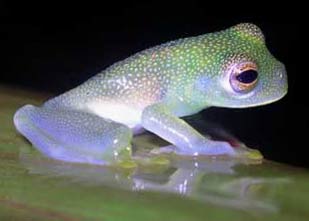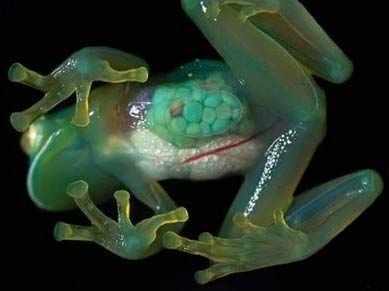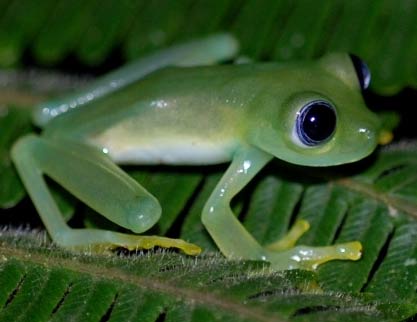Glass Frogs – The See-through Frogs

The glass frog is one of those bizarre and fascinating creatures in this world. Upon looking down at this amphibian, the first thing you might notice is its soft lime-green color. But if you were to turn him over, a quick glance at his abdomen would catch your attention. The glass frog’s stomach is completely transparent! Close examination of this unique creature reveals a fully visible system of organs, including the heart, liver, and full intestinal tract. Scientists believe that earlier frogs of this species evolved to have this trait for camouflage; while perched on a leaf or branch, they are extremely difficult to spot from a distance.

These frogs are very small creatures, the smaller species are about 0.78 in (2 cm) on average, while the biggest they can get is the “giant” species males which can be 3 in (8 cm). Most could easily perch on the top of a matchbox. Different species can be found in Central and South American rain forests, usually in the canopy, far above the ground. They venture lower rarely, and when they do, it is mainly for breeding. Some glass frogs, however, make their home closer to the ground in the vegetation surrounding small forest streams.
The glass frog is a nocturnal creature. During the day, it spends most of its time sleeping in the thick rain forest vegetation. In the evening, however, they are very active, spending the majority of their time looking for food. Later at night and into the very early morning is their most active time for breeding.

Males are very territorial, and will not allow another male to be in its breeding grounds. If a male enters another glass frog’s territory, the defending frog will let out a very low warning sound. If the offending male doesn’t back off, the defending frog will jump on his back in an aggressive manner, effectively chasing him away.
One unique property the glass frog boasts besides its signature translucency is the position and shape of its eyes. Commonly, they are confused with the tree frog; however, the glass frog’s eyes are very bright and forward-facing, while the tree frog’s eyes are positioned on the sides of its head. This can be very useful in differentiating the glass frog from others.
